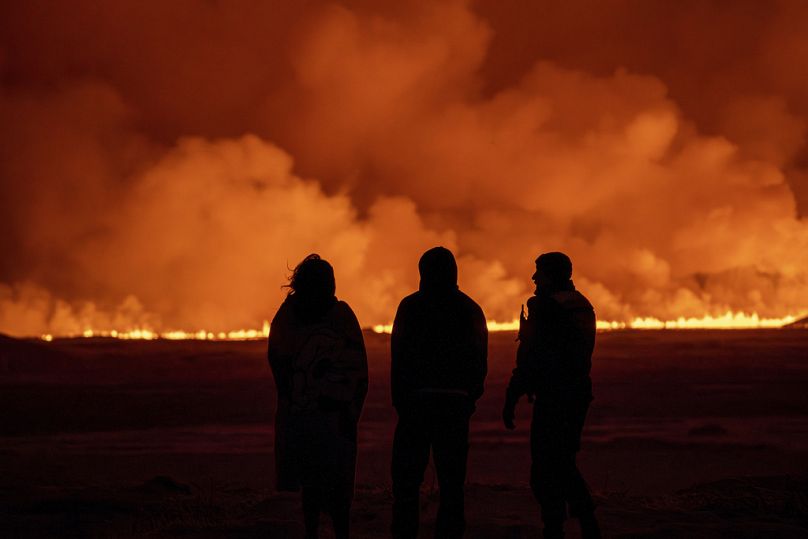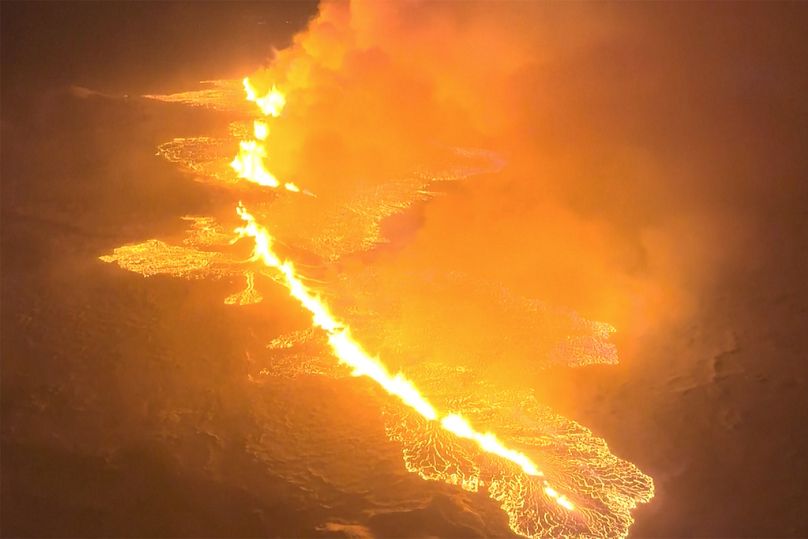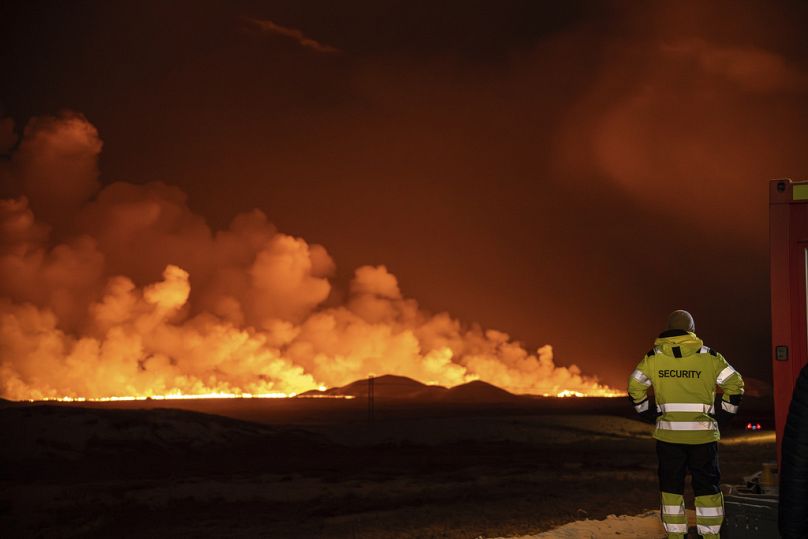A four kilometre-long fissure has opened up in the ground in an area expected to see frequent eruptions in coming years.
A volcanic eruption was continuing in Iceland on Tuesday morning, but its power appeared to be declining, Iceland's Meteorological Institute (IMO) announced.
The power of the eruption "seems to be decreasing", wrote the IMO on its website.
The eruption through a fissure in the ground began after an earthquake on Monday evening in an area south of Reykjavik where seismic activity had been very intense since the beginning of November.
"The fact that the activity is already decreasing is not an indication of how long the eruption will last, but rather that the eruption is stabilising," the institute added.
It noted a similar trend had been observed at the start of previous eruptions on the Reykjanes peninsula.
The fissure is around 4km long, said the IMO, which previously estimated it to be around 2.8km long – three times longer than the last eruption last summer.
This latest eruption, the fourth in two years, took place three kilometres from Grindavik, a village with a population of 4,000, which was evacuated on 11 November when a state of emergency was declared following a large build-up of magma.
All roads around Grindavík are closed and will remain so for the next few days, the police announced on Facebook, stating that the population is currently in no danger.
According to the IMO, risks to air traffic are so far low. The aviation colour code was briefly changed to red but quickly changed back to orange in the absence of an ash cloud.
"For the moment, there is no disruption to arrivals or departures at Keflavik airport", Iceland's airport operator ISAVIA said on its website overnight, with traffic relatively light at this late hour.
Travellers are currently more likely to be affected by an air traffic controllers' strike scheduled for Tuesday.
In 2010, the Eyjafjallajökull volcano in the south of the island caused the greatest disruption to air traffic in peacetime. This title has since been erased from the record books by the Covid-19 pandemic.
A new volcanic cycle?
Until March 2021, the Reykjanes peninsula, south of the capital Reykjavik, had been spared from eruptions for eight centuries.
Since then, there have been two more eruptions, in August 2022 and July 2023, a sign, according to volcanologists, of renewed volcanic activity in the region.
In October, signs of ground swelling were detected near the "Blue Lagoon", the famous turquoise hot springs that are perennially popular with tourists. The site partially reopened on Sunday.
In 2021, 2022 and last July, volcanic eruptions in an uninhabited area of the surrounding region became major tourist attractions, attracting almost 680,000 visitors, according to the Icelandic Tourist Board.
Iceland's head of civil protection and emergency management Vídir Reynisson warned that this new eruption "is not a tourist eruption and you have to observe it from very far away", on local public television RUV.
According to vulcanologists, the new cycle in the peninsula could last for decades.
Thirty-three volcanic systems are considered active in this land of fire and ice, the most volcanic region in Europe.
During the night, images from the local media, whose cameras have been installed near the volcano for weeks, showed glowing orange lava gushing vigorously from a fissure.
"No country better prepared"
"Our thoughts are with (...) the local population, we hope for the best, but it is clear that this is a major eruption", wrote the head of the Icelandic government, Katrín Jakobsdóttir, on Facebook.
On November 11, after the declaration of a state of emergency, the residents of Grindavik, a picturesque village of 4,000 inhabitants, were evacuated as a precaution after hundreds of earthquakes caused by the displacement of magma beneath the earth's crust, a potential warning sign of a volcanic eruption.
"No country is better prepared for natural disasters than Iceland", said the Prime Minister at a press conference on 18 November.
Other volcanoes, such as Askja in the uninhabited highlands of central Iceland, have recently shown signs of activity.
One of the country's most fearsome volcanoes is Katla, near the south coast. It last erupted in 1918, with an unusually long pause suggesting an imminent revival.














